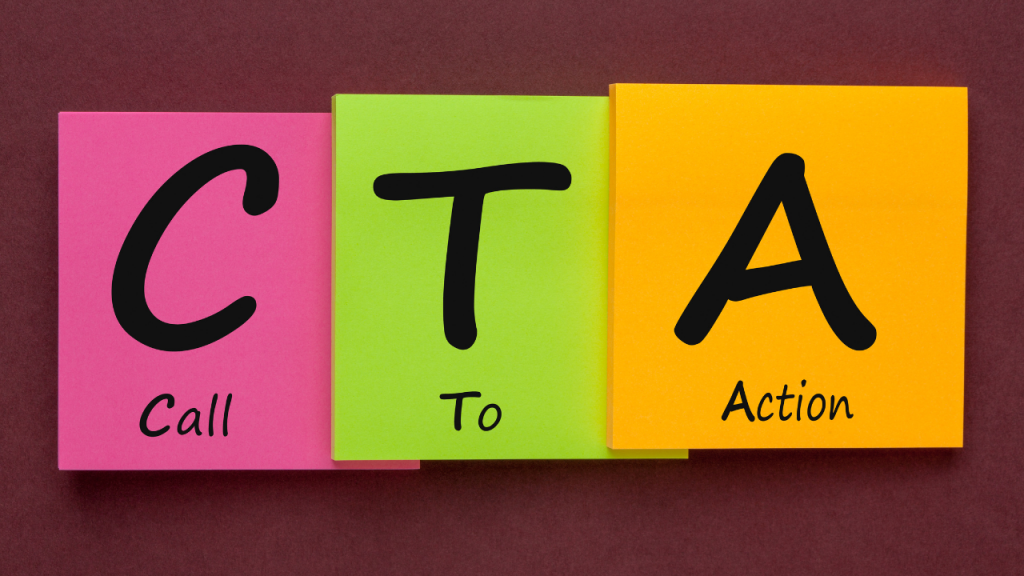A well-designed call to action (CTA) can turn passive viewers into active participants by pointing them toward desired behaviors like purchasing or signing up for a newsletter. Understanding the science underlying CTAs is crucial to effective conversion optimization in this era of constantly changing user preferences and dynamic online environments.
In this post, we will explain the nuances of one of the digital marketer’s most effective tools: the call to action (CTA).
CTAs are essential when it comes to conversion optimization. A well-designed CTA can distinguish between a passing gaze and a deliberate action.
This article’s primary goal is to give readers a thorough grasp of CTAs and how to use them to produce measurable outcomes. You may anticipate using valuable techniques to create CTAs that grab users’ attention and lead to conversions and deep user engagements.
What is CTAs
A CTA functions as a signpost directing people in a particular path. These actions could range from purchasing to signing up for a service. A call to action (CTA) persuades readers to interact with your content, whether it is a noticeable button, inducing text, or an appealing image.
Types of CTAs:
Incredible variety exists in the field of CTAs. The format you choose significantly impacts how users behave, from bold buttons that demand attention to words that are carefully designed to motivate action.
- Button CTAs: Button CTAs draw attention and offer clear instructions thanks to their vivid images and concise wording.
- Text CTAs: Text CTAs nimbly lead users towards softer actions by blending in with information.
- Image CTAs: Image CTAs use images to elicit feelings and highlight products, whereas form CTAs use interactive exchanges to gather valuable data.
- Social media CTAs: Social media CTAs increase brand awareness and promote community interaction.
Each form of CTA provides a unique way to elicit action. It allows marketers to customize their strategy by campaign objectives, user preferences, and the interaction context, enhancing the digital user experience and boosting conversions.
CTAs’ function within the sales funnel
At various points in the sales funnel, CTAs play different subtle roles. A well-designed CTA strategy may produce significant engagement at each customer journey stage, from raising awareness to assisting customers through deliberation and eventually influencing decision-making.
Identify your audience
A thorough grasp of your target audience is the cornerstone of a successful CTA approach. You can develop CTAs that connect with people personally by segmenting your audience based on demographics, behavior, and preferences.
Since 80% of consumers are more inclined to purchase when firms offer personalized experiences, personalization is crucial. Additionally, it has been discovered that customized CTAs convert 202% better than their generic equivalents by considering user preferences and behaviors.
One-size-fits-all marketing’s heyday is passing. The secret is personalization. CTAs can be made much more effective by aligning with various user personas’ distinct interests and motivations. Addressing particular concerns and ambitions of your audience can help you establish a better emotional bond with them.
Using customer data to guide CTA strategy
The emergence of data-driven marketing has changed how we think about CTAs. Analyzing consumer data offers insightful information about what appeals to your audience. Utilizing this data will enable you to improve conversion rates and your CTA approach.
Creating effective CTAs
A complex balancing act between art and science is required to produce a compelling CTA. It would help if you employed clear, persuading, and action-oriented language. Utilizing the power of urgency, exclusivity, and apparent advantages, such as “Get Started Now” or “Unlock Exclusive Access,” can motivate customers to act right away.
Persuasive language and action-oriented text:
The word choice can significantly impact the effectiveness of a CTA. Verbs with an active tense, such as “Discover,” “Join,” and “Explore,” elicit a feeling of urgency. It is also advised to use psychological cues like FOMO, scarcity, speed, and social proof to heighten their persuasiveness.
The use of visuals and design in CTAs:
Your CTAs must be visually appealing to stand out. Typography, contrast, and other design elements can draw the eye and project professionalism. Nevertheless, the design must support the message without distracting the user, as too many visual components can reduce conversions.
Visibility and Placement:
CTAs must be strategically positioned to get users’ attention. The best way to ensure that CTAs are noticed when users are most engaged is to place them in prominent locations or close to pertinent information (above the fold).
In newspaper design, “above the fold” refers to the visible material without unfolding the paper. It relates to the content that people see without scrolling in digital marketing. CTAs can be placed above the fold to increase visibility and engagement. According to Nielsen Norman Group research, users spend 80% of their time on websites above the fold, emphasizing the importance of this area.
Relevance of CTA to context and content:
Compelling CTA depends on contextual relevance. It is a logical next step when users come across a CTA that aligns with their interests or increases the value of the content they interact with. Understanding the user’s goal and matching CTAs to their journey is crucial.
Mobile optimization and CTA responsiveness:
The popularity of mobile browsing has altered user expectations and behavior. Users use their cell phones to direct product research, read articles, and complete buys. As indicated by Google, cell phones represent the greater part of all web traffic around the world, highlighting client inclination changes.
In this situation, CTA responsiveness is of utmost importance. When a call-to-action (CTA) is responsive, it can change its functionality and user experience to fit multiple screen sizes and orientations. By passing mobile optimization, consumers may become irritated, bounce rates may increase, and conversion possibilities may be lost.
A/B testing CTAs
The best way to improve your CTA strategy is through A/B testing. You can determine which components of CTAs are most effective with your audience by contrasting various iterations. Based on actual user engagements, this iterative method enables you to improve your CTAs consistently.
In addition, tracking CTA performance is essential for adjusting your plan. Metrics like click-through, conversion, and bounce rates may determine the success of your CTAs. You can assess your strengths and potential areas of improvement using these metrics.
Using analytics tools, you can view some of these metrics. Analytics tools provide insightful information about CTA performance. You can find trends and patterns that guide your optimization efforts by using platforms like Google Analytics, Crazy Egg, and Hotjar that provide visual representations of user behavior.
Conclusion:
In conclusion, mastering the science of calls to action (CTAs) is vital in today’s dynamic digital landscape, where well-designed CTAs transform passive observers into active participants, guiding them toward desired actions. This guide navigates through the nuances of CTAs, unveiling their varied formats and strategic roles within the sales funnel.
Emphasizing personalized approaches driven by data insights, the guide reveals the fusion of creative language and design elements for crafting compelling CTAs that resonate with users. Strategic placement, context relevance, and mobile optimization are essential elements.
At the same time, A/B testing emerges as the iterative tool to refine CTA strategies based on fundamental user interactions, ultimately empowering marketers to navigate the evolving realm of digital engagement with confidence.






